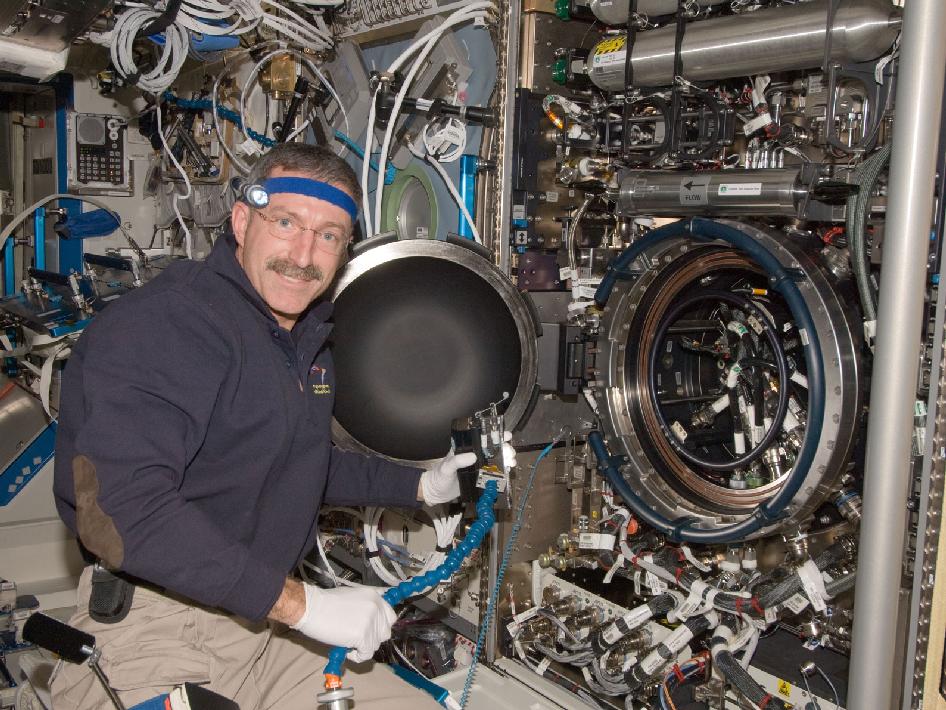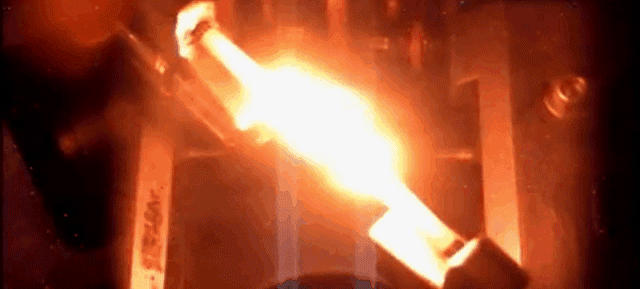Remember that flame burst recorded by an astronaut aboard the ISS? Well, it wasn’t just for the fireworks. In fact, that great ball of fire led to the discovery of a previously unknown type of cool-burning flame that isn’t even visible to the naked eye.
We all marvelled at the incredible-looking Vine published by astronaut Reid Wiseman a few weeks ago, but a new release explains a bit more about exactly what was happening in the video. The team was led by an engineer from University of California, San Diego named Forman Williams, who remotely initiated a series of tests that took place inside a bookshelf-sized testing chamber where astronauts can study different types of flame in different atmospheric conditions.
There, Williams’ team ignited a droplet of fuel called heptane — yes, igniting fuel aboard the space station — to see how the flame would behave. And the ball of flame we saw in the Vine was actually just the beginning of the test. After it was extinguished, another flame was left burning. One that was invisible to the naked eye, or any camera aboard the ISS. Using other sensors, the research team figured out that this invisible, cool-burning flame was still going strong. “We observed something that we didn’t think could exist,” Williams says in the statement.
These flames don’t usually have the chance to form here on Earth, but in microgravity, they were able to flourish. Here’s how UC San Diego explains the phenomena in a release:
The difference between earth and the space station is buoyancy. When droplets of fuel burn on earth, buoyancy limits the amount of time gases can hang around in the high temperature zone around the droplets. So there isn’t enough time for the droplets’ chemistry to support the cool flames. But in micro-gravity, there is no buoyancy, so there is enough time for the gases to stay around the droplets and for that chemistry to develop.
So the trick will be recreated the same cool-burning combustion here in Earth’s atmosphere. The study, published in the journal Microgravity Science and Technology, is just the beginning. Now, the ISS will undertake a whole new series of tests to find out how this new type of flame could benefit engine design back here on Earth. The new study will start this winter under the impossibly badass-sounding name of COOL FLAME INVESTIGATION. [UC San Diego, Sploid, io9]
Here’s NASA astronaut and commander Dan Burbank in 2011 working with the Combustion Integrated Rack facility, where the experiment took place. Image via NASA.

